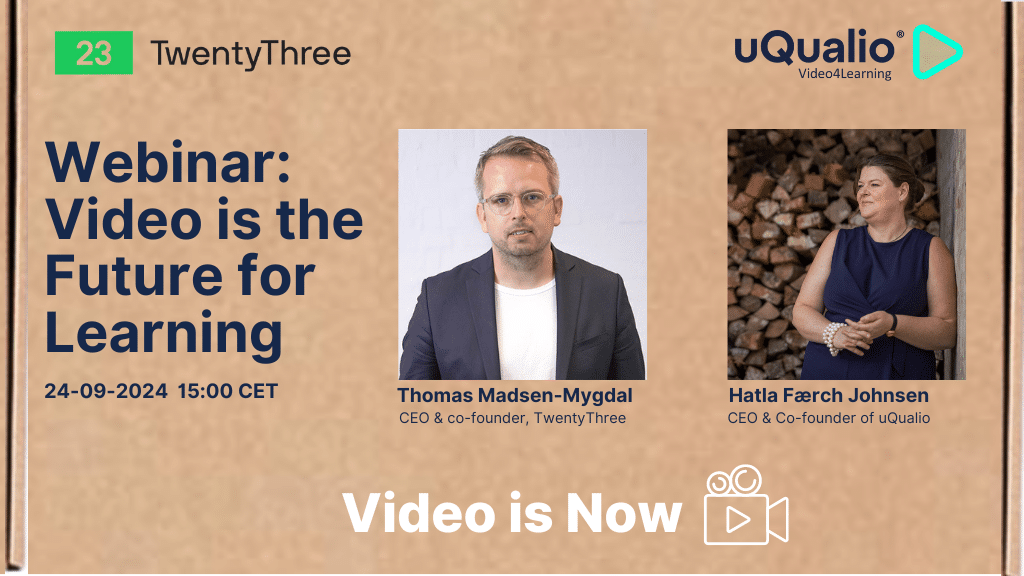Online courses made in your own video eLearning software solution are a great way to learn for any audience: your employees, students, customers, users, suppliers, channel partners, or retailers.
This article presents several points to keep in mind when making your video course in order to maximize the advantages of eLearning.

What Makes Video eLearning Great?
First, what makes video eLearning courses so great? They reduce the time and costs needed to develop the courses and for the learners to acquire knowledge. Thanks to the utilization of various types of multimedia, the content gets engaging, and information retention is improved, leading to enhanced eLearning. But that’s not all!
Some solutions, like ours, i.e., uQualio Video4Learning, also include a practice question function and a final test function, so that you can train yourself and be sure that you or your audience really learned everything from a given course. uQualio additionally offers the possibility of using a help button
During a practice session, so that a participant can watch the exact moments of the video a given question relates to.
Moreover, contrary to normal settings, online eLearning courses allow you and your audience to learn at your own pace and when you need it. This makes the process much more enjoyable and increases productivity.
Finally, gamification (including game-design elements, for example adding points, progress bars, or rewards like badges) works wonders for the results. The uQualio online eLearning platform includes all these features (and more!).
Best Practices When Making Video eLearning
As with many other things, when it comes to making video courses, preparation is key. Each course is made from several topics (chapters), each containing a video and questions.
Before you start the video, have an overview of what you want to achieve. It might be a good idea to make a storyboard to better visualize your takeaways. Before you start filming, you must know who your target group is, what is the goal of the course, and each video’s aim.
When it comes to making a video, there are three considerations :
- Content,
- Length, and
- Quality
Regarding content, you need to think about the message of the video. What is it that this video should convey? What would be the best way to do it? For example, having an extra resource, e.g., a pdf file or a presentation may be useful (on uQualio, you can add up to 4 files for each video).
Research and experience with various video lengths have shown that bite-sized videos achieve much better results, as the focus and the ability to learn drops the longer the video goes on. Therefore, your eLearning videos should be around 2-3 minutes long and include only a small number of takeaways (max. 3). There should also only be a few videos per course, max. 8.

As a beginner, you might consider doing the audio and video separately. Write down what you want to say (possibly the full text, but key points may work better). Then, record it, make a video, and simply overlay the audio on top. It might be too much for newbies to record the video and talk at the same time (it’s harder than you may think!).
As far as video quality is concerned, you need to consider it in the context of your audience. If you’re making a professional video for customers, good-quality content is expected. However, a lower-quality handheld mobile camera may be good enough to shoot videos for eLearning content, meant for a private group (e.g., study group, employees, blog audience, etc.)
As mentioned earlier, gamification aspects are worth looking into. On uQualio video training platform, for example, users can see their scores and achieve badges (can be personalized for a given audience) on different levels to compete and share their results via social media.
Achieve Effective & Affordable Video Training
– uQualio is an award-winning, easy-to-use, all-in-one NextGen LMS software for any types of online video training.












